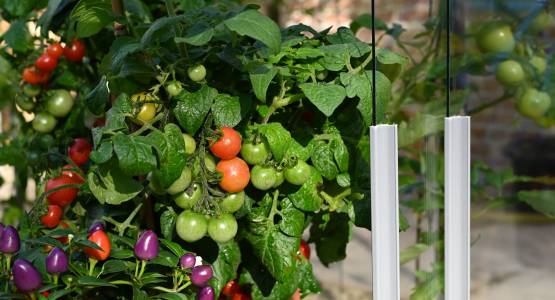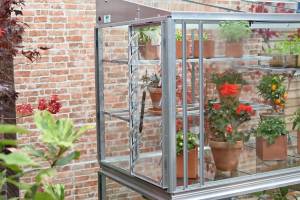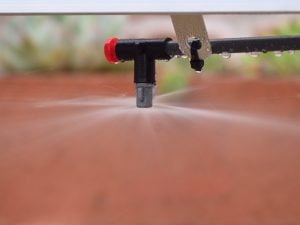Problems with growing tomatoes in a greenhouse

Problems with growing tomatoes in a greenhouse and how to overcome them
Growing tomatoes in a greenhouse can be a rewarding experience, offering the chance to enjoy fresh, juicy tomatoes year-round. However, despite the controlled environment, growing tomatoes in a greenhouse comes with its own set of challenges. In this blog post, we will explore some common problems greenhouse tomato growers face and provide practical solutions to overcome them.
1. Temperature Fluctuations
The Problem:
Maintaining an optimal temperature range for tomatoes is crucial. Tomatoes thrive in daytime temperatures between 70-85°F (21-29°C) and night-time temperatures between 55-70°F (13-21°C). Fluctuations outside this range can result in poor fruit set, slow growth, or blossom drop.

The Solution:
- Ventilation: Install roof vents, side vents, and fans to regulate temperature effectively.
- Heating Systems: Use heaters with thermostats during colder months to prevent nighttime temperatures from dropping too low.
- Shade Cloths: In the summer, use shade cloths to reduce excessive heat buildup inside the greenhouse.
- Thermometers and Sensors: Regularly monitor greenhouse temperatures with accurate thermometers and consider automated climate control systems.
2. High Humidity Levels
The Problem:
Tomatoes are susceptible to fungal diseases such as grey mould and powdery mildew, which thrive in high humidity. Excessive moisture in the air can also cause issues like cracked fruit or poor pollination.
The Solution:
- Dehumidification: Use a dehumidifier or improve ventilation to reduce humidity levels.
- Watering Techniques: Water plants in the morning and avoid overhead watering. Use drip irrigation to target the soil directly and minimize water on foliage.
- Spacing: Space plants adequately to promote airflow between them.
3. Pest Infestations
The Problem:
Greenhouses often provide a warm, humid environment that is ideal for pests such as aphids, whiteflies, spider mites, and thrips. These pests can damage plants by feeding on their sap or transmitting diseases.
The Solution:
- Regular Inspections: Check plants weekly for signs of pests, such as yellowing leaves or sticky residue.
- Biological Controls: Introduce beneficial insects like ladybugs, lacewings, or predatory mites to keep pest populations under control.
- Insect Barriers: Use fine mesh screens on vents and doors to prevent pests from entering the greenhouse.
- Organic Treatments: Apply neem oil or insecticidal soap to manage infestations without harming beneficial insects.
4. Pollination Challenges
The Problem:
Unlike outdoor gardens where wind and insects naturally pollinate flowers, greenhouse tomatoes may suffer from poor pollination, leading to reduced fruit yield.
The Solution:
- Hand Pollination: Gently shake flower clusters or use an electric toothbrush to mimic the vibration caused by wind or pollinators.
- Attract Pollinators: If possible, allow access for pollinating insects like bees by opening vents or installing a small hive of bumblebees.
- Air Movement: Use fans to circulate air and aid in the distribution of pollen.
5. Nutrient Deficiencies in Tomatoes
The Problem:
Tomatoes are heavy feeders and require a balanced supply of nutrients. Common deficiencies include yellowing leaves (nitrogen deficiency), blossom-end rot (calcium deficiency), and poor fruit development (potassium deficiency).
The Solution:
- Soil Testing: Test soil or growing medium regularly to ensure it has the proper nutrient balance.
- Fertilization: Use a high-quality tomato fertilizer that provides nitrogen, phosphorus, potassium, and trace elements like magnesium and calcium.
- pH Balance: Ensure the soil pH is between 6.0 and 6.8, as improper pH can prevent nutrient uptake.
- Consistent Watering: Uneven watering can exacerbate nutrient deficiencies. Maintain even soil moisture levels.
6. Disease Outbreaks
The Problem:
Fungal, bacterial, and viral diseases such as late blight, fusarium wilt, and tomato mosaic virus can quickly spread in the enclosed environment of a greenhouse.
The Solution:
- Sanitation: Clean and disinfect greenhouse surfaces, tools, and pots regularly.
- Disease-Resistant Varieties: Choose tomato varieties that are resistant to common diseases.
- Crop Rotation: Avoid planting tomatoes in the same soil year after year to prevent the buildup of soil-borne pathogens.
- Quarantine New Plants: Inspect new plants for signs of disease before introducing them to the greenhouse.
7. Watering Problems with Tomatoes in the Greenhouse
The Problem:

Both overwatering and underwatering can lead to issues such as root rot, stunted growth, or cracking fruit.
The Solution:
- Consistent Schedule: Water plants consistently, allowing the top inch of soil to dry out slightly between waterings.
- Irrigation Systems: Use drip irrigation systems with timers for precise and even watering.
- Mulching: Apply mulch around the base of plants to retain soil moisture and regulate temperature.
8. Overcrowding
The Problem:
Greenhouses often have limited space, and overcrowding can lead to poor airflow, increased humidity, and competition for resources.
The Solution:
- Pruning: Regularly remove suckers and lower leaves to improve air circulation and direct energy toward fruit production.
- Spacing Guidelines: Plant tomatoes at least 18-24 inches apart to give them room to grow.
- Training Systems: Use stakes, cages, or trellises to train plants vertically and save space.
9. Lighting Issues
The Problem:
During winter or in regions with limited sunlight, tomatoes may not receive enough light for optimal growth, leading to leggy plants or poor fruiting.
The Solution:
- Supplemental Lighting: Use LED grow lights to provide 12-16 hours of light per day.
- Reflective Surfaces: Line greenhouse walls with reflective material to maximize natural light.
- Light Positioning: Place lights close to plants but avoid direct contact to prevent heat damage.
10. Cracking and Splitting Tomato Fruit
The Problem:
Inconsistent watering or rapid changes in soil moisture can cause tomatoes to crack or split as they grow.
The Solution:
- Water Management: Water consistently to avoid sudden changes in soil moisture levels.
- Mulching: Use mulch to maintain even moisture and prevent rapid drying of the soil.
- Harvest Timing: Pick tomatoes as soon as they ripen to reduce the risk of splitting.
Conclusion
So in our ‘Problems with growing tomatoes in a greenhouse and how to overcome them’ guide we have seen that while growing tomatoes in a greenhouse offers many advantages, it’s essential to address the unique challenges that come with it. By implementing the solutions outlined above, you can create an optimal environment for your tomato plants to thrive. Regular monitoring, preventive measures, and timely interventions are key to overcoming problems and enjoying a bountiful harvest. Happy gardening!
